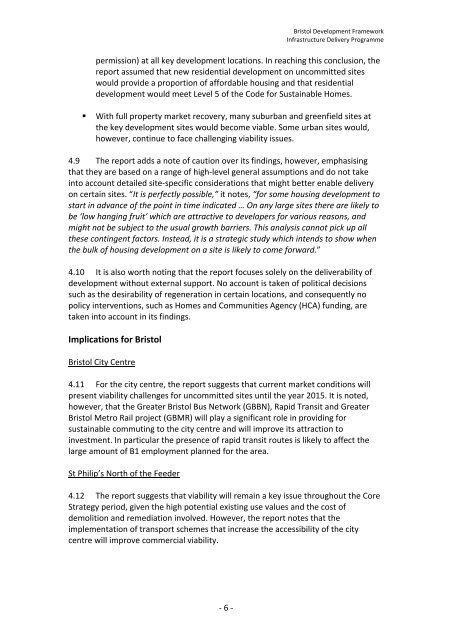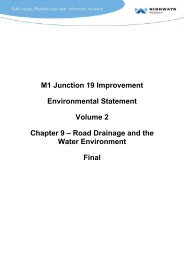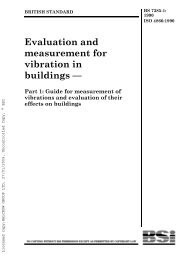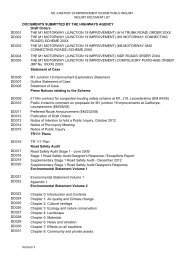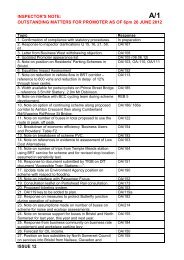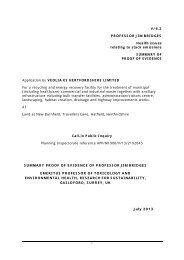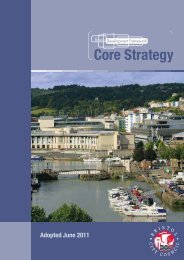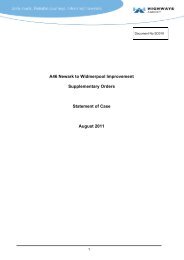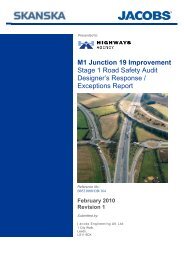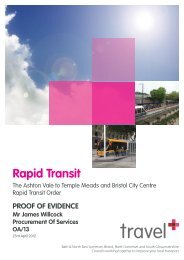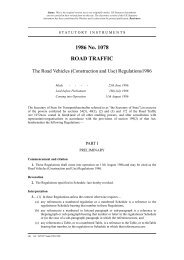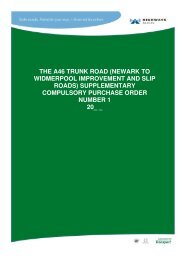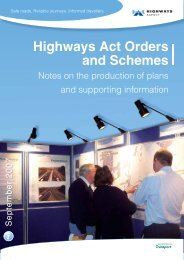Bristol Development Framework Infrastructure Delivery Programme
Bristol Development Framework Infrastructure Delivery Programme
Bristol Development Framework Infrastructure Delivery Programme
Create successful ePaper yourself
Turn your PDF publications into a flip-book with our unique Google optimized e-Paper software.
<strong>Bristol</strong> <strong>Development</strong> <strong>Framework</strong><br />
<strong>Infrastructure</strong> <strong>Delivery</strong> <strong>Programme</strong><br />
permission) at all key development locations. In reaching this conclusion, the<br />
report assumed that new residential development on uncommitted sites<br />
would provide a proportion of affordable housing and that residential<br />
development would meet Level 5 of the Code for Sustainable Homes.<br />
• With full property market recovery, many suburban and greenfield sites at<br />
the key development sites would become viable. Some urban sites would,<br />
however, continue to face challenging viability issues.<br />
4.9 The report adds a note of caution over its findings, however, emphasising<br />
that they are based on a range of high‐level general assumptions and do not take<br />
into account detailed site‐specific considerations that might better enable delivery<br />
on certain sites. “It is perfectly possible,” it notes, “for some housing development to<br />
start in advance of the point in time indicated … On any large sites there are likely to<br />
be ‘low hanging fruit’ which are attractive to developers for various reasons, and<br />
might not be subject to the usual growth barriers. This analysis cannot pick up all<br />
these contingent factors. Instead, it is a strategic study which intends to show when<br />
the bulk of housing development on a site is likely to come forward.”<br />
4.10 It is also worth noting that the report focuses solely on the deliverability of<br />
development without external support. No account is taken of political decisions<br />
such as the desirability of regeneration in certain locations, and consequently no<br />
policy interventions, such as Homes and Communities Agency (HCA) funding, are<br />
taken into account in its findings.<br />
Implications for <strong>Bristol</strong><br />
<strong>Bristol</strong> City Centre<br />
4.11 For the city centre, the report suggests that current market conditions will<br />
present viability challenges for uncommitted sites until the year 2015. It is noted,<br />
however, that the Greater <strong>Bristol</strong> Bus Network (GBBN), Rapid Transit and Greater<br />
<strong>Bristol</strong> Metro Rail project (GBMR) will play a significant role in providing for<br />
sustainable commuting to the city centre and will improve its attraction to<br />
investment. In particular the presence of rapid transit routes is likely to affect the<br />
large amount of B1 employment planned for the area.<br />
St Philip’s North of the Feeder<br />
4.12 The report suggests that viability will remain a key issue throughout the Core<br />
Strategy period, given the high potential existing use values and the cost of<br />
demolition and remediation involved. However, the report notes that the<br />
implementation of transport schemes that increase the accessibility of the city<br />
centre will improve commercial viability.<br />
‐ 6 ‐


